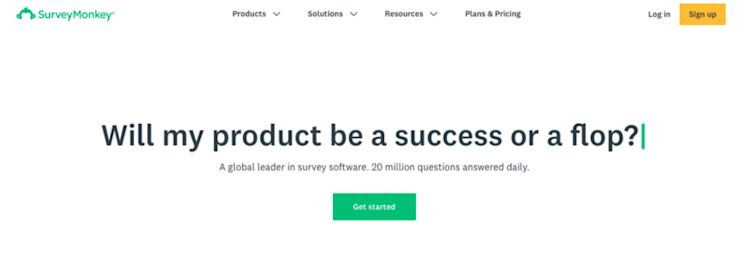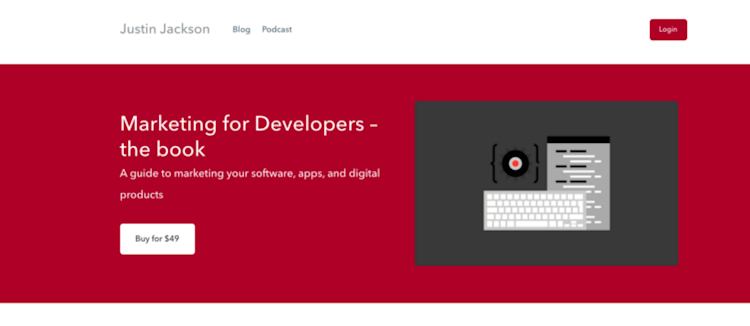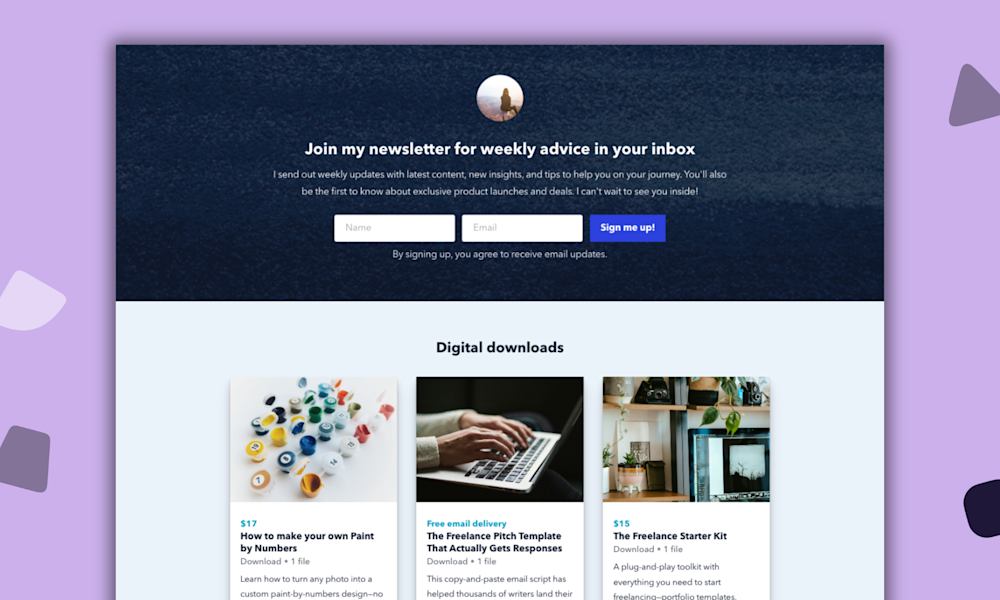Choosing an ebook length can feel a lot like Goldilocks when she picks her porridge.
It’s about finding the ebook length that’s just right for your business.
To help you navigate the direction of your next ebook, we follow the lead of the three bears.
More specifically, we’ll head into three different ebook lengths, some examples, plus ebook types and pricing recommendations for each.
Whether you’re writing your first ebook freebie or formatting your umpteenth novel, there’s something valuable for you to glean from our tips today.
Let’s hop to it.
Three ideal ebook lengths (plus word counts, type, and pricing)
#1. Short ebooks
If you’re putting together an ebook for the first time and want to test the waters, short ebooks are a great way to get your feet wet.
Short ebook lengths land anywhere from a few pages to several thousand words.
The Write Practice considers a short print book to average 25,000 words, which is around 100 pages.
And when you categorize ebook lengths by genre, the average lengths of short ebooks starts at 123 pages for children’s books and cap out at 519 pages for long and meaty law ebooks.

For our purposes today, we’re going to call the above estimates medium-sized to long ebooks.
We’ll call short ebooks anywhere between a few pages to 5,000 words.
The reason being, these short ebook types are chopped out of the above averages yet serve a popular and powerful purpose in today’s digital marketing landscape — they make great lead magnets.
You can turn your short ebook into a free giveaway that you can offer your target audience in exchange for their email, which is a popular and effective way to build your email list.
In fact, as far as length, 58.6% of marketers claim short-form written lead magnets work better than long-form.

And a short ebook doesn’t have to come in a short story or traditional fiction or non-fiction ebook format, either.
There’s more flexibility in formatting your short ebook type — from digital guides and cheat sheets to whitepapers and workbooks.
Check out Joy Cho’s What Kind of Business (or Side Hustle) Should I Start? free ebook.

Her ebook is a guide for aspiring entrepreneurs and solopreneurs and walks people through, step-by-step, finding their ideal businesses.
Wondering what topic to feature in your free ebook?
If you’re a blogger, you’ll find at least one golden answer inside your Google Analytics reports. Just check out which articles and topics are the most popular among your blog readers.
You can even offer a creative short ebook as a content upgrade on that relevant blog article, just like Hubspot does on their 10 Business Email Phrases to Stop (& Start) Using With Clients blog article…

…where they allow e-readers to download 25 Proven Sales Email Templates.

Like with any piece of valuable content that you create for your audience, a bit of customer research goes a long way.
Reach out to your audience to guide the topic of your short ebook.
Ask your audience what they want to learn more about and what they need help with. And then ask them to describe their pain points.
All in all:
Creating a short ebook is an ideal option for e-readers who want to spare shorter attention spans and learn something valuable on your topic for free.
If you don’t want to give your short book away as a freebie, our next option might be a better fit.
#2. Medium-sized ebooks
If you want to sell a children’s book, novella, short story, or even shorter non-fiction book, this is a great ebook format to consider. The medium length is a natural fit for supplementing or replacing a print book version of work.
The mid-sized ebook range falls between 5,000 and 20,000 words — although you’ll find a lot of resources out there that vary from this.
For instance, children’s books fall in the 500–600-word space, according to one source.

According to another, children’s books range anywhere between 300 and 40,000 words.

Also, a micro-fiction is around 100 words, a flash fiction between 100–1,000 words, and a short story between 1,000–7,500 words.

As you can tell, word count is all over the map, and all of these may or may not follow the same guidelines.
So we’re all on the same page (pun intended), we’re calling medium-sized ebooks anything priced above $0 that can be ingested in 1–3 sittings.
Our recommended 5,000–20,000-word range is a very general guideline and not a hard rule.
As for pricing, the mid-sized ebooks generally go for anywhere between $0.99 and $9.99.
That’s the recommended price point range if your ebook is sold using Kindle Direct Publishing (KDP), anyway. This is a pricing strategy that’s based on the cost of sale (what Amazon charges the self-publisher for each sold unit) and Amazon’s sales commission for selling your ebook.
As a very general example, we include the two bottom-tier royalty ranges — across multiple retail distributors — in the mid-sized ebook pricing range.

The KDP royalty pricing formula gets pretty complex, so if you want to avoid it altogether, a cleaner (and more profitable) way to distribute your ebooks is by self-publishing and selling your ebooks directly to your e-readers.
Plus, the way the book industry is moving — away from paper books and publishing houses, and toward digital ebooks and self-publishing channels — you have more options than ever to sell ebooks directly to your audience.
(Conveniently, you can streamline the whole process by selling your ebook as a digital download with Podia. Check it out for yourself with a free 30-day trial.)
Selling platforms aside, the main takeaway is you can charge a lower price ($0.99-$9.99) for medium-sized ebooks than you would a large ebook ($10+).
Another way to quantify the size and price of your ebook is by the depth of your content and how many sittings your e-readers will need to consume it.
For instance, entrepreneur Sheri Graham sells her Intentional Summer Days ebook for $5, which is likely something her e-readers can finish between 1–3 sittings of reading.

In Sheri’s $5-ebook, readers can expect to learn “30 different activities [they] can do with [their] children that relate to being intentional”.

She, of course, doesn’t sell her book by featuring the page quantity, but rather the benefits her e-readers will gain from her ebook.
So, it’s less about length and more about what your e-readers will benefit from ingesting your content.
Ask yourself:
-
Can it be consumed in 1–3 sittings, or is it more dense than that?
-
What is the perceived value of the benefit offered inside your ebook’s content?
If the answers are more than three sittings and over $10, then our third ebook length is more likely a better route.
#3. Long ebooks
The third option is a long ebook, which gives your e-readers a deeper, longer reading experience.
For non-fiction ebooks, you can think of it as an expanded piece of content where your audience can achieve their desired results in over three sittings.
If you’re a fiction author, this is likely where your ebook length will land. According to Reedsy, the average word count by genre varies between 35,000 and 95,000 words.

Again, if you’re wondering what topic to cover in your ebook, customer feedback — whether it’s gleaned from your blogging experience or social channel activity — comes in handy.
Find out which topics, issues, and problems resonate the most among your audience channels (i.e., video viewers, email subscribers, social followers, and blog readers) and tailor your long ebook to help solve those specific topics.
You can even leverage your social channels and/or use SurveyMonkey or Typeform to send a survey link with relevant questions that probe for their big pain points.

Regardless of how you do reach out, there’s no better source for informing your ebook topic than your audience itself.
Also, if coming up with a mighty table of contents, which outlines a page count in the hundreds and a 20,000+ word count, sounds daunting to you right now, you’re not alone.
That’s a big ebook to compile.
But, there is a trusty way through it.
Consider this: Write a fast first draft. Pretend you’re writing ebooks in a speeding contest, where you write down as much content as you can in your first draft without worrying about details or even writing “well”.
The purpose of your fast first draft is to get your ideas down in their skeleton form, and then go back and revise at a slower pace. You can always fill in the content gaps, revise, restructure, and reformat as you see fit.
Mentally, this exercise is worth it because the bulk of your overwhelm disappears once you have a first draft in hand, even if it looks starkly different from the final version your e-readers see.
Plus, length may or may not be a selling point, so it doesn’t really serve you to focus on page count or word count.
For instance, length isn’t even mentioned on Full Circle’s The Baby Steps Plan sales page, which features a $49 longer ebook that helps musicians step-by-step become professionals in the music industry.

On the other hand, The Friedman Archives Guide to Sony’s Alpha 6500 is 657 pages long and sells for $26.45.

The point is it’s less about word count and page count, and more about your e-readers’ perceived value and the benefits you bring to your e-readers — be that entertainment or solving a problem.
What’s more, the beautiful thing about selling ebooks (and digital products generally) is you have more flexibility in not only pricing your digital products, but also delivering value to your e-readers.
Case in point: Justin Jackson’s Marketing for Developers print book sells on Amazon for $19.99.

Compare this to Justin’s Marketing for Developers ebook that he sells directly to e-readers for $49.

This version allows him to deliver a range of formats to his customers, like PDF, ePub, Mobi, audio chapters, worksheets, and even code samples.

Pretty diverse, no?
Another diverse quality of long ebooks is the pricing, which runs the gamut.
Friedman Archives’ and Justin’s long ebooks sell in the $19.99 to $49 range, while something like Oakstone’s Comprehensive Review of Neurology academic ebook sells for $995.

While textbooks are their own ball game, it illustrates the point: like most things for sale in your business, pricing is all about the perceived value and the benefit you deliver to your customers.
So try it out, and if it doesn’t work, you can always change your pricing later. Nothing is set in stone when you’re running your own show.
If you're not ready to publish your own ebook just yet, you can also consider making a free product that you give away as a lead magnet. That way, when you do have an ebook for sale, you can promote it to a list of people who are already familiar with your work.
You can also promote the work of other people through affiliate marketing. Learn more about some of the highest paying affiliate programs to find products that are a good fit for your audience.
Match your ebook length to the right business goal
There are many benefits to creating and selling ebooks, especially if you leverage the strengths in each length.
It’s a nice balance between delivering value to your e-readers and adding to your bottom line, whether that means more audience members, customers, or revenue.
To recap the three ebook lengths:
-
#1. Short ebooks fall between a few pages and 5,000 words and make great lead magnets that you can offer as a freebie to grow your email list.
-
#2. Medium-sized ebooks range between the 5,000- and 20,000-word mark, typically a read between 1–3 sittings. Pricing averages between $5 and $10.
-
#3. Long ebooks offer a deeper dive into your subject matter, reaches upwards of 20,000 words, or several hundred pages, and can be digested in 3+ sittings. Pricing is over $10.
May your ebooks be successful at every length.



